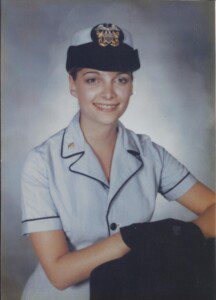Written by R. Steven Shisler, Esq. for the RSDSA blog
Workers’ compensation (WC) laws generally vary from state to state. As I am admitted to practice law in Pennsylvania, this article only will address WC issues in accordance with Pennsylvania law. Explanations of the law and recommended strategies are not applicable to those whose claims fall outside of the Pennsylvania Workers’ Compensation Act (PWCA). Also, because strategy and professional judgment are fact specific and may vary among claims, this article is written for your general knowledge only.
Lastly, if you are seriously injured at work, and especially if this results in CRPS, I strongly suggest that you retain an attorney as soon as possible after the injury. It is simply too dangerous to pursue your claim without counsel. Regardless of your relationship with your supervisor and the company, remember that your employer’s insurance carrier controls the WC benefits and is most concerned about paying as little as possible. The attorney you retain must represent claimants (employees) in WC matters and also should have some knowledge of CRPS.
Justice
In my first year of law school, my contracts professor “set up” a fellow student. Proper application of the law in accordance with the facts of the case resulted in a horrendous and unjust ruling. When the professor asked how the student felt about the Court’s conclusion, she said she understood that this was a proper application of the law; but the result was unfair. The professor nearly went berserk. He shouted, “Fair? Young lady, the law is the law and justice is justice; and if you want justice, go across the street!” and he pointed toward the divinity school where future priests were taught.
I usually tell this story to new clients, and I advise them that I cannot obtain justice for them; my job is to maximize their recovery (benefits) within the boundaries established by the law. It is nothing more than a high-stakes chess game.
Benefits
In order to establish a right to compensation under the PWCA, you must be employed and have been injured at work in a work-related accident. You do not have to prove your employer negligent, only that you sustained a work-related injury.
Benefits consist of earnings loss benefits for total or partial disability, medical benefits, specific loss benefits, death benefits, and illegally employed minors’ benefits, and may include an award of interest, costs, and attorneys fees to be assessed against the employer for unreasonable contest of the claim.
A compensable injury under the PWCA must leave you disabled (an inability or limited ability to work) leading to a loss of earning power, which is determined by your average weekly wage at the time of injury. You are entitled to 66.6% of your lost earning power, with a specific top and bottom compensation rate.Most WC claimants who suffer work-related CRPS have difficulty understanding the limitations of WC benefits. They have heard of large settlements in other types of cases and believe that their extreme pain and suffering should account for a high settlement. However, the PWCA does not provide for, nor are you entitled to, compensation for pain and suffering. It doesn’t matter whether you had a great future and you can no longer do your former job. If you can work at any job, even one not available at your former workplace, and if you can earn the same weekly wage, you are no longer entitled to WC earnings loss benefits. This means that if you have CRPS in all four limbs but can do any job within your usual employment area (generally within 30 miles from your home) such as testing chewing gum or mattresses in your home, you are not totally disabled. If these other jobs pay the same as your pre-injury wage, you can lose your benefits.
Pain and suffering is recoverable in negligence cases, but not in WC matters. Moreover, the PWCA is the sole remedy you have. This means that even if your employer or a co-worker caused your injury through negligence, the company, its workers, and even the company’s WC insurance carrier are immune from a negligence lawsuit. However, if your employer or its insurance carrier violates the PWCA, your attorney should file a Penalties Petition. The employer may be assessed penalties in addition to any unpaid compensation (up to 50% of unpaid, overdue, or illegally suspended compensation; statutory interest and/or attorneys’ fees for unreasonable contest).
You are entitled to be paid for reasonable and necessary diagnosis and treatment. The question is: “What is reasonable and necessary?” If you seek medical treatment far away, and the same type of physician, e.g. neurologist, pain management physician, is practicing within a reasonable distance from home, the insurance carrier is not required to pay for the longer-distance treatment. Moreover, if you have CRPS and you can travel a distance for treatment, it will likely harm your case. The argument can be made that if you can sit for the length of time required to travel, then you can do work that is sedentary and has limited use of your hands, such as answering telephones using a headset.
The insurance carrier will likely deny payment for any treatment that may be even slightly unusual, such as a ketamine drip or acupuncture. In some cases, such as surgery for the implantation of a morphine pump or spinal cord simulator, the hospital may require pre-certification approval by the WC insurance carrier. The carriers often deny pre-certification. Additionally, if your CRPS has spread, the insurance carrier may deny the claim as being unrelated to the original work injury. Finally; because of the bad press on OxyContin®, I have noticed that insurance carriers are often refusing to pay for the drug. In the meantime, as medication and payment for treatments are denied, the patient’s CRPS and pain become aggravated and often spreads and the injured employee becomes frustrated and lost. The insurance carrier may take advantage of this denial to influence your settlement decision.
Finally, you may be entitled to benefits for the specific loss of the use of a limb. This can mean actual amputation, or simply the inability to use that limb. For example, if you had four fingers amputated by a snow thrower and those fingers have been reattached but are unusable, you may be entitled to benefits for specific loss of those fingers or even the hand. The benefit amount and payment for an appropriate healing are set forth in the PWCA.
The Petitions
WC issues are not decided by a jury but by a WC judge employed by the Commonwealth of Pennsylvania Department of Labor and Industry. The claim may never reach a judge. The employer files a Report of Occupational Injury with the Department of Labor and Industry, Bureau of Workers’ Compensation after being notified of the injury. It is imperative to report your work-related injury to your employer immediately following the injury. Failure to do so may result in your claim beingpermanently barred. No compensation is paid the first seven days, but if disability lasts at least 14 days you are entitled to WC earnings loss benefits, retroactive to the date disability began. Your employer then has 21 days after receiving notice of the disability to pay WC earnings loss benefits. If the employer hasn’t paid, file a Claim Petition for compensation benefits and a Penalties Petition seeking penalties, interest, cost, and attorney’s fees, with the Bureau of Workers Compensation.
Many CRPS sufferers continue to work despite their pain and the detriment to their health and their claim because of financial concerns. If you cannot work without pain, you and your physician should strongly consider whether you arc able to work.
After a Petition is filed, there will be a number of court appearances, some of which will involve only the attorneys. The burden of proof is on you to prove that you have suffered a work-related injury and that you are disabled and can’t return to work. This is done with your testimony as well as that of your physician and other witnesses.
Often, you may feel that your attorney is doing nothing and that an unreasonable period has passed without any benefits being paid. Unfortunately, this is the nature of the system. Schedules-the judge, attorneys, and physicians-play a large part in the time involved.
After the taking of evidence, the judge will issue a briefing schedule, giving your attorney several months in which to write his brief, which is akin to a written closing argument. Then the defense will have the same amount of time to write a responsive brief. After the briefs are filed, the judge’s workload determines when an opinion is issued.
Unfortunately; there is little you can do to expedite this process. Your attorney can object to any time extensions requested by the defense and request that the judge limit the time for submission of evidence or briefs. The judge decides whether to do so or not. As a last resort, if you have been denied benefits, you may have to turn to public assistance, or welfare, for survival monies and medical assistance while your claim is in process.
As in all injury cases, the defense takes advantage of the delays inherent in the system to manipulate you. Your employer may attempt to force you to accept a lower settlement. Remember, your employer has no incentive to settle until the case reaches a point where all of the evidence is admitted, and the insurance carrier feels there may be a high risk of losing the case. The law does not force either side to settle the case.
Settlement amounts in WC cases are generally low, since they are based wholly upon negotiations regarding how long you will be disabled and whether you will be totally or partially disabled. Additionally, the PWCA caps the length of time you may collect WC benefits for partial disability.
Your employer is also entitled to insist on a complete settlement of the claim, including future medical benefits. If you have CRPS, you should be very cautious about any such settlement, and agree to it only if you have no choice.
After negotiations are final, your attorney will file a Petition to Seek Approval of a Compromise and Release Agreement. At the hearing, you will be questioned by your attorney; the judge, and/or defense counsel to make sure you understand the ramifications of settlement. In the event that any of your medical bills for work-related injuries have been or may in the future be paid by Medicare, you must make arrangements with Medicare to reimburse them for past and future bills from your settlement.
As mentioned previously, you are entitled to payment of reasonable and necessary medical bills for diagnosis and treatment. If you are denied medical treatment or your bills aren’t being paid, respond promptly. If you have medical insurance coverage and have been denied by the WC insurance carrier, your attorney must direct your healthcare providers to submit the bill or pre-certification request to your private insurance carrier.
In the case of an HMO, the primary care physician must first make the referral. In conjunction with the referrals and submissions, your attorney should tell your medical insurance carrier you have been denied by the WC insurance carrier and remind the medical insurance carrier that it is required to approve and/or pay for the treatment and seek subrogation, or recovery of the medical carrier’s payments, from the proceeds of the WC case.
Your attorney should also file an immediate Review Petition, asking the judge to review the medical issues and enter an Order regarding the denied medical treatment. Your attorney should also file a Penalties Petition referencing your aggravated CRPS, which may have occurred as a result of being denied medical treatment, and the increased stress and resultant threat to your health from denied medical care.
Your attorney should request a hearing on an emergency basis in the letter submitting the Petition to the Bureau of Workers’ Compensation for filing. Additionally, the attorney should write to the judge and request an emergency hearing on an expedited basis.
If your medical insurance carrier delays accepting the claim, you can threaten to sue for breach of contract and insurance bad faith. You can put pressure on both workers compensation and the medical insurance carriers by filing a complaint with the State Insurance Commissioner for violation of the Pennsylvania Unfair Insurance practices Act. However, this only leads to investigation and possible punishment by the State Insurance Commissioner and does not give you a private cause o action against the insurance company.
As a last resort, if you have been denied benefits, you may have to turn to public assistance, or welfare, for survival monies and medical assistance while your claim is in process. Public assistance will have a lien against any WC proceeds that you may ultimately obtain. You may also apply for Social Security Disability Benefits and/or supplemental Security Income; however these benefits are customarily denied and the appeal process may take a year or more. If you are receiving WC benefits, the amount of social security benefits will be reduced. Additionally; qualifying for Social Security Disability does not determine the right to we benefits, or vice versa, and receiving Social Security will likely be deemed inadmissible in the WC case; it certainly doesn’t hurt to attempt to have it admitted.
Suspension of Benefits
If you are receiving WC benefits, sooner or later your employer will me a petition to modify; suspend, or terminate your benefits. The process begins with the “independent medical examination.” Your employer can request that you undergo a medical examination by an employer chosen physician twice a year. In reality, there is no such thing as an independent medical examination; it is a defense medical examination by a physician who receives large sums of money from insurance carriers for conducting these exams, and who is likely biased toward the carrier Based on the restriction, or lack thereof, as determined by the physician, the carrier will have you submit to a vocational examination, after which a report will be issued indicating whether there are any jobs in your geographic area you can perform within the established limitations. Rest assured, the vocational expert, hired by the insurance carrier, will always find jobs you can do. The employer does not have to prove that the employee would be hired for any of these jobs.
Now the process for terminating your benefits begins. This must be countered with medical testimony contradicting the defense physician, you must testify regarding your limitation and perhaps there would be testimony from another vocational expert.
If you do not submit to the medical examination or the vocational interview; your employer’s carrier will me a petition to compel you to do so. After the examinations and reports are completed, your employer will file a petition to suspend, modify; or terminate benefits.
Liability Actions
Your attorney should leave no stone unturned in the search to determine whether an outside party, aside from you employer or a co-worker, also may be liable for your injuries and damages. This could include delivery people, a company contracted to clean and wax floors, the driver of another vehicle in a work-related car accident, or manufacturers, distributors, and vendors of defective machines. These related claims are not governed by WC law. If you are injured as a result of a negligent third-party, or manufacturer, distributor, and/or vendor of a defective machine, you are entitled to damages for pain and suffering, payment of all or a percentage of lost wages, depending on the type of case, and payment of all and/or a percentage of your medical bills. Additionally; your spouse may be entitled to recovery for loss of consortium, which includes society, services, and companionship. The WC carrier, any medical insurance carrier who paid for the accident -related injuries, and the Department of Public Assistance/Medicare, may have a lien against any third party recovery and must be repaid. Failure to do so may result in legal action against you, your attorney, or both. Additionally; any lien holders must deduct from their lien, at least a pro rata share of attorney’s fees and costs incurred in pursuing the liability claims and may be willing to negotiate additional reductions in the amounts they accept as payment in full of their liens.
R. Steven Shisler, Esq., is an attorney whose practice concentrates in plaintiffs’ personal injury, malpractice, and WC matters involving CRPS. He is an CRPS survivor, whose desire to become an attorney was motivated by his own injuries, including CRPS, resulting from an accident.

 I want to introduce you to Diane Simonson, a first-time walker in this year’s walk.
I want to introduce you to Diane Simonson, a first-time walker in this year’s walk.
 and with your help we can cure RSDS/CRPS. Donate now.”
and with your help we can cure RSDS/CRPS. Donate now.”